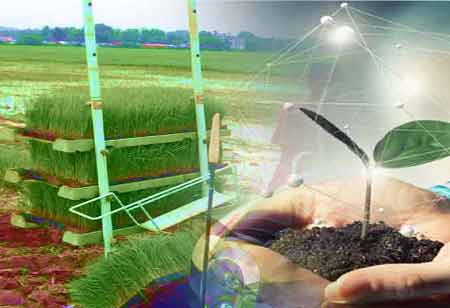Thank you for Subscribing to Agri Business Review Weekly Brief
Safeguarding Food with Biopesticides
In a world grappling with the critical challenge of ensuring a safe and sustainable food supply, farming technology has evolved in various ways.

By
Agri Business Review | Thursday, November 02, 2023
Stay ahead of the industry with exclusive feature stories on the top companies, expert insights and the latest news delivered straight to your inbox. Subscribe today.
Biopesticides have contributed to modern agriculture through healthy and environment-friendly farming methods.
FREMONT, CA: In a world grappling with the critical challenge of ensuring a safe and sustainable food supply, farming technology has evolved in various ways. Crop protection methods that use naturally occurring insecticides produced by plants to ward off pests are among these more environmentally friendly advancements. These naturally occurring materials are referred to as biologicals or biopesticides. Farmers can increase output and limit the use of synthetic chemicals by using biologicals, saving energy and lessening the environmental effects of chemical farming.
Farmers in conventional and organic farming practices use various techniques and technologies to attempt to manage insects, weeds, fungi, and illnesses. A farmer's integrated insect management (IPM) program, a collection of approaches to ensure agricultural production and environmentally sustainable insect reduction for conventional and organic crops, may include tools like biologicals or other pesticides as crucial components. The implementation of an IPM aids farmers in determining the optimum method of treatment to strategically eradicate pests, deciding on the amount of treatment necessary, and when or if pesticides are necessary. Farmers frequently turn to biologicals to help their pest management when they implement their IPM programs since IPM programs strongly emphasise being environmentally sustainable.
The first stage in creating an IPM is setting an action threshold or a point at which insect populations or environmental factors suggest that pest control action is necessary. This cutoff point informs the farmer when to implement protection measures. Moreover, it's also essential to closely examine the types and severity of pests affecting crops. Not all weeds, insects, and other living things must be controlled. Many of these are neutral, and some are even beneficial.
An additional feature of IPM programs for crops is threat prevention. Crop rotation, choosing pest-resistant crop varieties, and planting pest-free rootstock are a few cultural techniques that can prevent pests. IPM programs will choose an efficient and focused control approach, such as using highly targeted chemicals like pheromones to disrupt pest breeding or mechanical controls like trapping or weeding if the completion of previous steps reveals that pest management is necessary.
The IPM will instruct the farmer to repeat the previous processes if the initial IPM steps are ineffective. However, the subsequent control stage will involve fresh pest management techniques.
A range of tried-and-true and cutting-edge pest management methods, such as the developing field of biopesticides, are needed to maintain a plentiful and dependable food supply chain. Ensuring crop output is challenging for farmers, but it is unquestionably valued.





